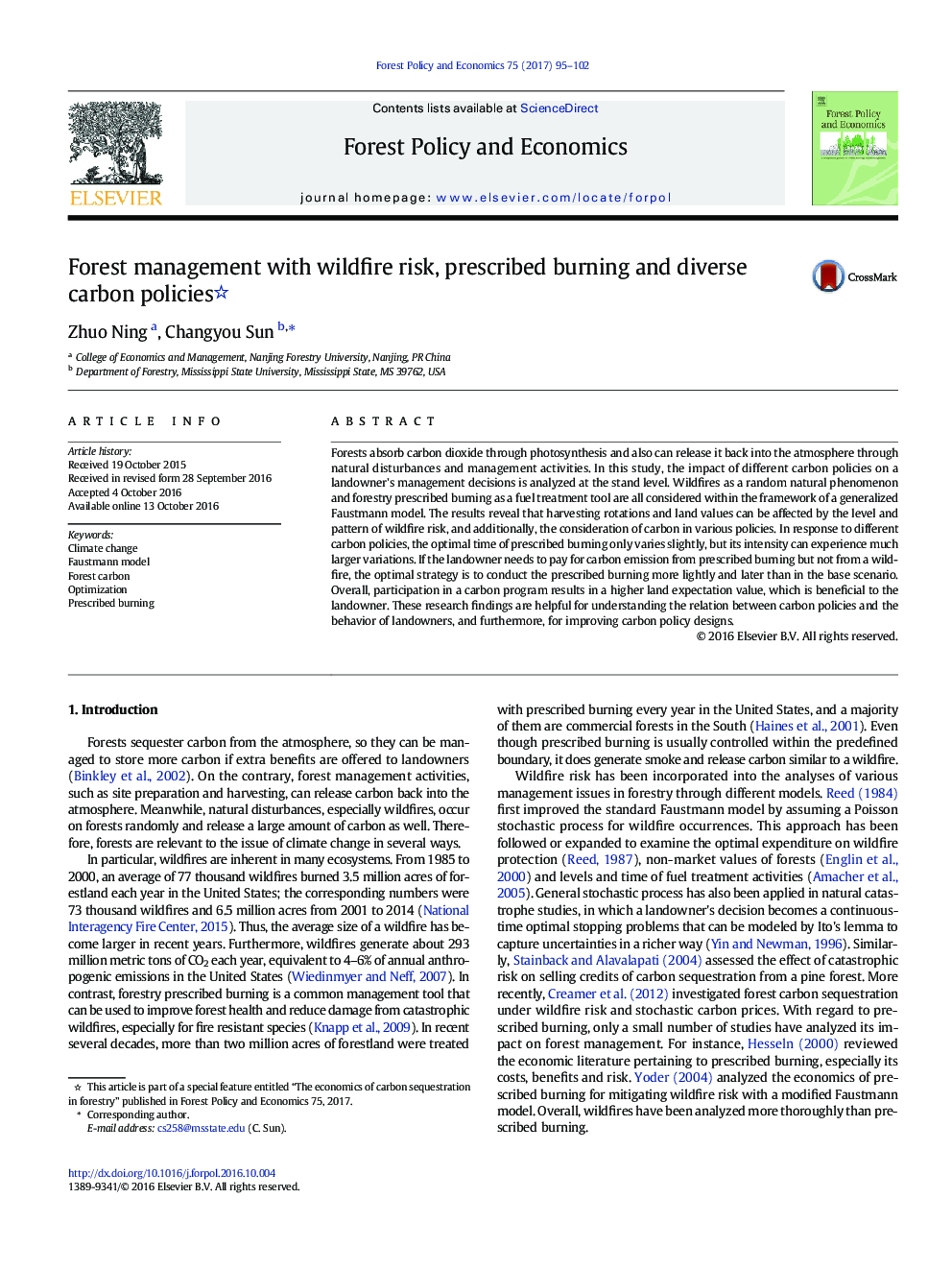| Article ID | Journal | Published Year | Pages | File Type |
|---|---|---|---|---|
| 6459771 | Forest Policy and Economics | 2017 | 8 Pages |
â¢Forests can absorb carbon and release it back by wildfires and management activities.â¢The impact of different carbon policies on management decisions is analyzed.â¢Prescribed burning intensity varies widely because of differences in carbon policies.â¢Participating in a carbon program is generally beneficial to landowners.
Forests absorb carbon dioxide through photosynthesis and also can release it back into the atmosphere through natural disturbances and management activities. In this study, the impact of different carbon policies on a landowner's management decisions is analyzed at the stand level. Wildfires as a random natural phenomenon and forestry prescribed burning as a fuel treatment tool are all considered within the framework of a generalized Faustmann model. The results reveal that harvesting rotations and land values can be affected by the level and pattern of wildfire risk, and additionally, the consideration of carbon in various policies. In response to different carbon policies, the optimal time of prescribed burning only varies slightly, but its intensity can experience much larger variations. If the landowner needs to pay for carbon emission from prescribed burning but not from a wildfire, the optimal strategy is to conduct the prescribed burning more lightly and later than in the base scenario. Overall, participation in a carbon program results in a higher land expectation value, which is beneficial to the landowner. These research findings are helpful for understanding the relation between carbon policies and the behavior of landowners, and furthermore, for improving carbon policy designs.
